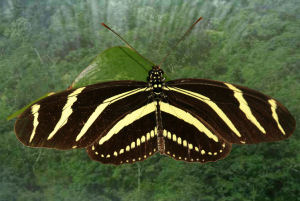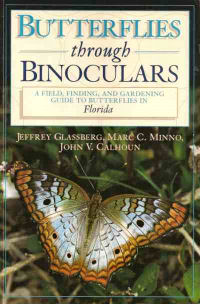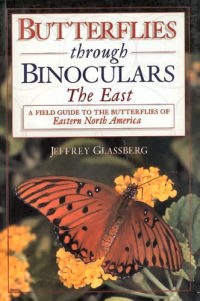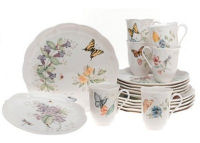
HOME
INTRO
SYMBOLS
ALMANAC
ECONOMY
GEOGRAPHY
STATE MAPS
PEOPLE
FORUM
NEWS
COOL SCHOOLS
STATE QUIZ
STATE LINKS
BOOK STORE
MARKETPLACE
NETSTATE.STORE
NETSTATE.MALL
GUESTBOOK
CONTACT US

Florida State Butterfly: Zebra Longwing
Photography: John J. Mosesso/NBII.Gov
Florida Law
The following information was excerpted from the Florida Revised Statutes, Title 2, Chapter 10.
TITLE IV - EXECUTIVE BRANCH Ch.14-24.
CHAPTER 15 - SECRETARY OF STATE.
SECTION 15.03.
15.0382 Official state butterfly. -- The Zebra Longwing (Heliconius charitonius) is designated the official state butterfly
History.--s. 1, ch. 96-153.
Sources...
The 2008 Florida Statutes. Online Sunshine. 2009. 14 February 2009 <http://www.leg.state.fl.us/Statutes/index.cfm?Mode=View%20Statutes&Submenu=1&Tab=statutes>
Shearer, Benjamin F. and Barbara S. State Names, Seals, Flags and Symbols: A Historical Guide Third Edition, Revised and Expanded. Westport, Conn: Greenwood Press, 3 Sub edition, 2001.
Additional Information
Zebra Longwing: State Symbols - Florida Department of State: Division of Historical Resources.
Zebra Longwing Butterfly - Heliconius charitonius: Natureworks - New Hampshire Public Television.
Zebra Longwing: International Butterfly Breeders Association, Inc. - An international, non-profit, membership-based trade association promoting high standards of ethics, competence and professionalism in the breeding of quality Lepidoptera for all purposes.
Zebra Heliconian (Heliconius charithonia Linnaeus, 1767): Butterflies and Moths of North America - Occurrence maps, species accounts, checklists, and photographs.
Heliconius charithonia: CalPhoto photographs. The Biodiversity Sciences Technology group (BSCIT), a part of the Berkeley Natural History Museums at the University of California, Berkeley.
State Butterflies: Complete list of official state butterfliess.
More symbols & emblems: Complete list of official Florida state symbols.

Butterflies Through Binoculars-Florida
Jeffrey Glassberg, Marc Minno, John Calhoun
Butterflies through Binoculars: A Field, Finding, and Gardening Guide to Butterflies in Florida, by Jeffrey Glassberg, Marc C. Minno and John V. Calhoun. 256 pages. Oxford University Press, USA (August 3, 2000) Florida's butterfly fauna is unique and, until the appearance of this volume, there has been no adequate field guide for the butterflies of this region. This guide simplifies identification by illustrating only species found in Florida--using superb photographs of live butterflies coupled with detailed range maps and identification data. It also offers, with unprecedented detail, much information on flight times and abundances for each of five Florida subregions, including reports on seventy localities in which to find butterflies. Lastly, discussions of the foodplants for each species along with suggestions for attracting these species to one's garden make this work invaluable for all Florida gardeners interested in butterflies.
Butterflies of Florida Field Guide, by Jaret C. Daniels. 256 pages. Adventure Publications (August 4, 2003) Perfect for backyard or field use, this guide features large, full-color photographs of each butterfly plus an illustration that points out key identification marks. Each entry is arranged by color, features a life-sized silhouette, and includes detailed information, helpful inset images and more.
Florida Butterfly Caterpillars and Their Host Plants, by Mark C. Minno, Jerry F. Butler and Donald W. Hall. 360 pages. University Press of Florida; 1st edition (April 29, 2005) Everything the butterfly gardener or naturalist needs to know about the relationship between caterpillars and the plants that help them turn into butterflies.
Gardening for Florida's Butterflies, by Pamela F. Trass. 136 pages. Great Outdoors Pub Co; 2nd edition (September 11, 1999) Bring life to your garden and experience the magic of metamorphosis! This book tells you how. It describes 23 species of butterflies and shows them in color photos - adults, caterpillars and pupae, as well as dozens and dozens of larval and nectar food plants. Complete growing information is included for each plant: family, plant type, geographic region, mature size, flowering time, color, light, water and soil requirements, propogation methodsand salt tolerance.
Your Florida Guide to Butterfly Gardening: A Guide for the Deep South, by Jaret C. Daniels. 104 pages. University Press of Florida; 1st edition (June 15, 2000) The guide helps you select plants for a yard where butterflies can live and return year after year. It includes planting diagrams, easy one-day container projects, and full garden layouts designed for each of Florida's three major growing zones and suitable for gardens throughout the Deep South. The author, an avid lepidopterist, persuaded his household to allow their garage to become a butterfly farm and raised many of the creatures pictured in the book. Of special interest is a section on conservation that describes the way individuals can act locally to improve the quality and biodiversity of their environment.
Where Butterflies Grow , by Joanne Ryder, 32 pages. Puffin (June 1, 1996) Reading level: Ages 4-8. In a field of lacy leaves, a small caterpillar hatches, grows, and sheds its skin, becoming a smooth, green creeper. It eats and changes some more, then in a sequence of remarkable close-ups, spins a sliken sling in which to pupate--until it finally bursts forth as a brilliant black swallowtail butterfly. Includes suggestions on how children can grow butterfiles in their own gardens.
I Wish I Were a Butterfly, by James Howe. 40 pages. Voyager Books (February 28, 1994) Reading level: Ages 4-8. After the frog at the pond's edge tells him that he's ugly, the cricket of Swampswallow Pond loses his zest for life and for singing. The glowworm and the ladybug try to persuade the cricket that he's just as good as the rest of them, while the dragonfly declares, "Wishing is a waste of time." Finally, the Old One, a spider who lives on the other side of the pond, spins a wise tale about the real beauty of friendship and convinces the cricket to sing again. A simple fable that deserves to stay in print a long, long, time.
Peterson First Guide to Butterflies and Moths, by Paul A. Opler, edited by Roger Tory Peterson. 128 pages, Houghton Mifflin Harcourt; 2nd edition (February 20, 1998) Peterson First Guides are the first books the beginning naturalist needs. Condensed versions of the famous Peterson Field Guides, the First Guides focus on the animals, plants, and other natural things you are most likely to see. They make it fun to get into the field and easy to progress to the full-fledged Peterson Guides. DESCRIPTION
The Butterfly Book: A Kid's Guide to Attracting, Raising, and Keeping Butterflies, by Kersten Hamilton. 40 pages. Avalon Travel Publishing; 1st edition (March 26, 1997. Reading level: Ages 9-12. An introduction to the life cycle, food, habitat, and behavior of butterflies shares advice on butterfly observation and conservation, explaining how to design a garden to attract butterflies and offering a color identification guide to twenty common North American butterflies.

Butterflies Through Binoculars-The East
by Jeffrey Glassberg
Butterflies through Binoculars - The East: A Field Guide to the Butterflies of Eastern North America, by Jeffrey Glassberg. 400 pages. Oxford University Press, USA (January 1999) This magnificent field guide greatly expands on Butterflies Through Binoculars: The Boston-New York-Washington Region--identified by Defenders of Wildlife Magazine as "the first to focus on netless butterflying" and called " a clear winner" by the Audubon Naturalist. Glassberg here shows us how to find, identify, and enjoy all of the butterflies native to the eastern half of the United States and southeastern Canada.
National Audubon Society Field Guide to North American Butterflies, 928 pages. Knopf; Chanticleer Press ed edition (July 12, 1981) A handy field guide with more than 1,000 photographs of all the butterflies of North America north of Mexico, including all true butterflies, the most common skippers, and many migrants and strays. The color plates are visually arranged by shape and color, and thumb-tab silhouettes provide a convenient index to identification of butterflies in the field. The species account for each butterfly provides measurements, descriptions of each stage of the life cycle, and information on coloring or distinguishing markings, flight period, habitat, and range.
A Field Guide to Eastern Butterflies, by Paul A. Opler, edited by Roger Tory Peterson. 512 pages. Houghton Mifflin Harcourt; Rev Sub edition (May 15, 1998) This newly designed field guide features descriptions of 524 species of butterflies. One hundred color photographs as well as 348 color range maps accompany the species descriptions. The 541 exquisite color paintings clearly show even the most minute field marks. Introductory chapters include information on butterfly gardening, habitats, and conservation.
The Life Cycles of Butterflies: From Egg to Maturity, by Judy Burris and Wayne Richards. 160 pages. Storey Publishing, LLC (April 1, 2006) This book describes in text and photos the butterflies that commonly visit gardens in the eastern states. Beginning with a chapter that looks at the basics of butterfly egg laying, the growth of caterpillars, metamorphosis, and butterfly behavior, the authors move to the heart of the book. With exquisite close-up photography, the eggs, caterpillars, chrysalids, and adults of 23 well-known butterflies are revealed.

Lenox Butterfly Meadow
Lenox Butterfly Meadow Tableware Collection, Summer teas and spring brunches call for dinnerware as fresh and lovely as the weather. The Lenox Butterfly Meadow pattern features a garden motif of butterflies, bumblebees, ladybugs, and blossoms set against an ivory background. The delicately rendered images, created by Lenox artist Louise Le Luyer, vary between pieces for a charmingly playful table. Crafted from fine bone porcelain, the pattern has gently scalloped rims and is safe in the oven, microwave, and dishwasher. Like all Lenox dinnerware, the Butterfly Meadow line is covered by a lifetime replacement policy.
 Custom Search
Custom Search



